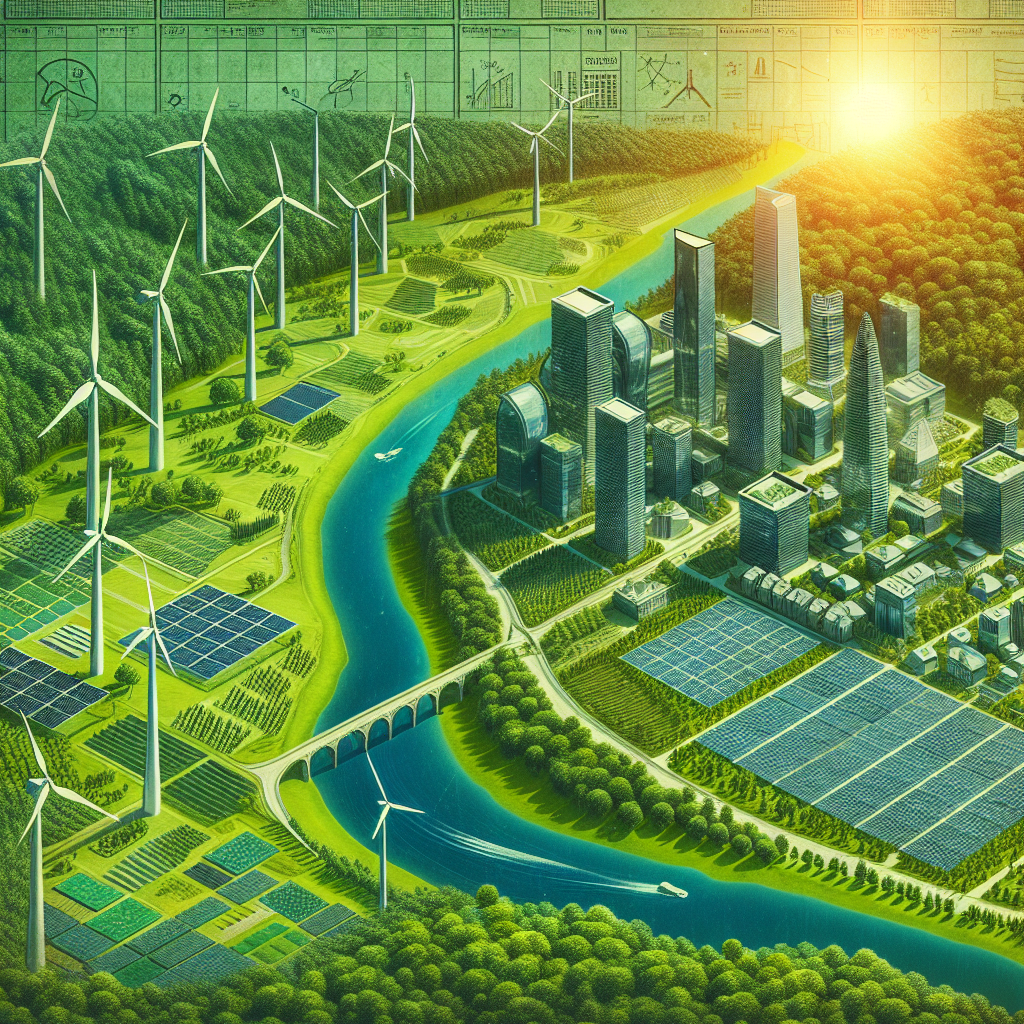Imagine a future where cities breathe, roads whisper with the rustle of leaves, and stormwater sings as it's filtered through layers of lush vegetation. Sound like science fiction? It's not—welcome to the world of Green Infrastructure!
Green Infrastructure (GI) is a fascinating, nature-based approach to urban planning that involves the use of natural systems to manage water, reduce urban heat, and protect biodiversity among other benefits. This sustainable approach has garnered attention worldwide, from the urban planners of New York City to the government officials in Singapore. Green Infrastructure isn’t just a fancy term promoted by environmentalists; it’s an essential tool for creating resilient and healthy urban environments in an era challenged by climate change.
What is Green Infrastructure?
Before we dive into the benefits, let's clarify what we're talking about. Green Infrastructure includes a wide array of practices and installations that utilize natural landscapes to provide environmental services. These can range from small scale options, like rain gardens and green roofs, to large scale networks of forested landscapes. They're designed to tackle modern urban challenges like managing stormwater, improving air quality, reducing heat, and enhancing public spaces.
The Origins and Evolution of Green Infrastructure
The concept of Green Infrastructure is not new. Its roots trace back to ancient times when natural resources were utilized ingeniously for societal benefits. However, as our cities have expanded, often disconnected from their natural surroundings, the balance has tipped towards grey infrastructure—think roads, pipes, and concrete.
In recent decades, the rise of environmental awareness and the pressing need for sustainable urban solutions have revived and rebranded these ancient techniques with a modern twist. Cities all over the planet, such as Copenhagen with its comprehensive stormwater management plans, have recognized the value of incorporating GI to combat flooding issues exacerbated by climate dynamics.
The Many Benefits of Going Green
Green Infrastructure isn't just about water and plants; it tackles several urban issues at once, making it an incredibly holistic solution:
Stormwater Management: By utilizing permeable surfaces and vegetated areas, GI helps to absorb and filter rainwater, reducing runoff and decreasing flood risks.
Biodiversity and Habitat Creation: GI creates new, vital habitats in urban settings. Green roofs, parks, and urban forests support species diversity and offer urban dwellers an escape to more natural surroundings.
Urban Heat Island Mitigation: The cooling effect provided by vegetation and water bodies counteracts heat absorbed and re-radiated by concrete jungle, lowering ambient temperatures.
Improved Air Quality: Plants play an indispensable role in filtering pollutants and providing oxygen. An increase in urban greenery translates to cleaner air for city residents.
Enhancing Aesthetic and Recreational Value: Green spaces contribute to the beauty of a city, providing spaces for recreation, relaxation, and interaction which is paramount for mental health and community building.
Global Success Stories
From Portland's rain gardens to Tokyo's wall gardens, Green Infrastructure has demonstrated a multitude of successes globally:
Portland, USA: Known for its robust implementation of bioswales and rain gardens, Portland effectively manages stormwater while beautifying its city.
Singapore: The city-state has embraced GI with gusto. Projects like the Bishan-Ang Mo Kio Park merge lush landscaping with flood control, enhancing urban ecology and recreation alike.
Copenhagen, Denmark: By converting streets and public spaces into dual-function floodable areas and parks, Copenhagen has created a resilient urban landscape prepared for heavy rainfall.
The Journey Ahead
The challenges of climate change demand innovation and adaptation. Green Infrastructure offers a path forward that marries human development with the natural world. By investing in nature-based solutions, we invest in a future where cities are not only resilient but are also sanctuaries for biodiversity and wellness.
Governments, urban planners, environmentalists, and communities must work collaboratively to harness this potential. The shift towards Green Infrastructure can transform our urban landscapes into greener, healthier, and more sustainable places—not as a distant dream but as a tangible reality.
As we continue on this exciting journey, the hope is clear: that nature and humanity will once again harmonize in the cities of tomorrow, one green step at a time.

